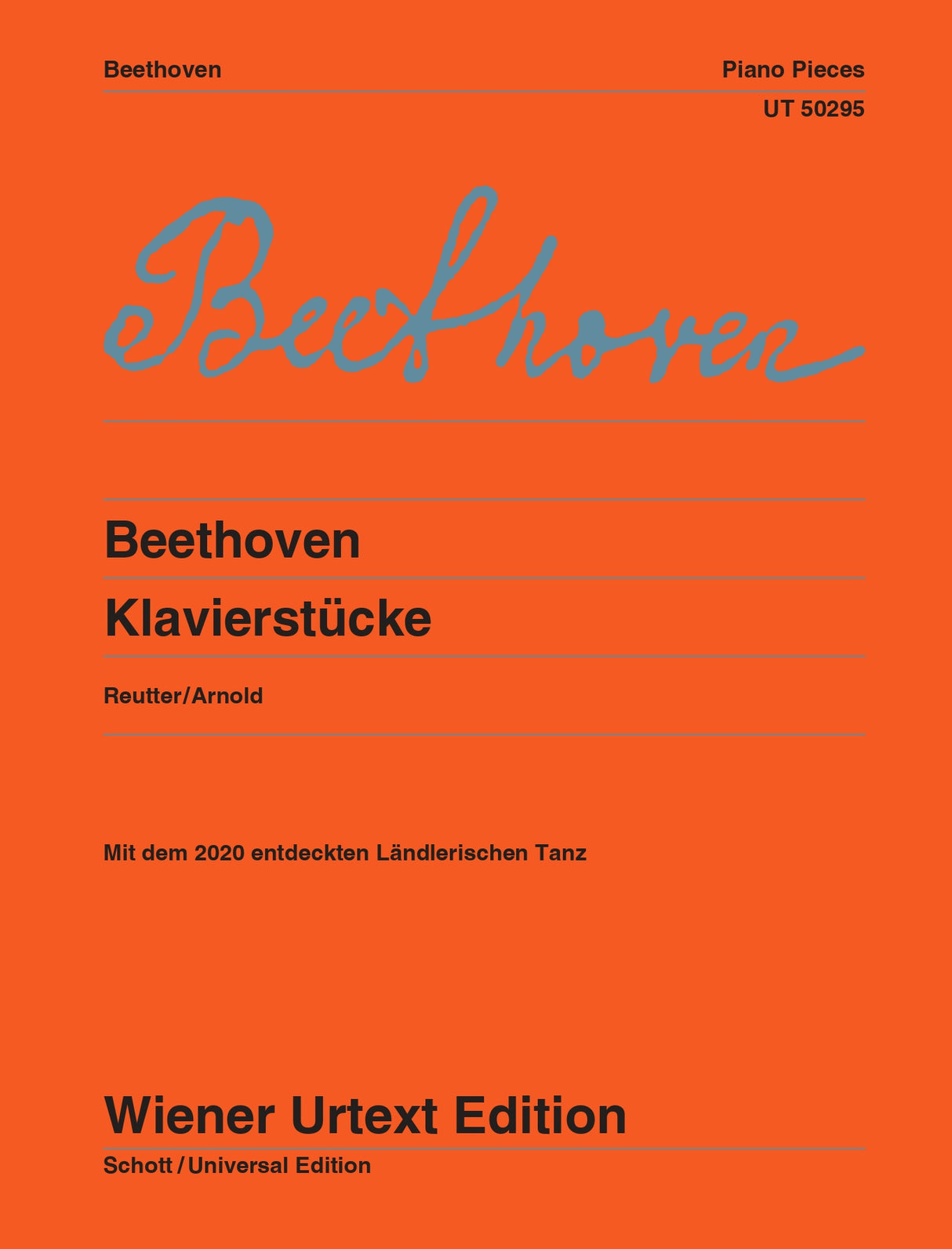Beethoven: Piano Pieces
In stock and typically ships within 1 business day.
- Composer: Ludwig van Beethoven (1770-1827)
- Editor: Jochen Reutter
- Fingering: Sheila Arnold
- Instrumentation: Piano
- ISMN:
- Size: 9.1 x 11.9 inches
- Urtext / Critical Edition
Description
Ludwig van Beethoven has left a considerable number of individual pieces for piano in addition to sonatas and works of variations. They range from larger works such as "The Rage over the Lost Penny" or the Fantasia, Op. 77 to the ingenious miniatures of the Bagatelles. in terms of their origin and history, they run through the entire œuvre of the composer from his time in Bonn to the last years of his life.
This edition completes the previous selection with important works, e.g. the Rondos (WoO 48 and 49) from 1784, which are also of pedagogical interest, or pieces that have so far hardly been noticed, such as the (musically) extremely attractive Allegretto in C Minor WoO 214. All the works have been re-examined from the sources and offer a significantly improved "Urtext". Even Beethoven's most famous piano piece "Für Elise" has undergone Minor retouching of the musical text and has been cleared of unjustified changes of the 20th century.
This edition includes also the "Ländler-like Dance" which was discovered in 2020.
Works:
- 7 Bagatelles, Op. 33
- Prelude in C Major, Op. 39, No. 1
- Prelude in C Major, Op. 39, No. 2
- Rondo in C Major, Op. 51, No. 1
- Rondo in G Major, Op. 51, No. 2
- Fantasy, Op. 77
- Polonaise in C Major, Op. 89
- 11 Bagatelles, Op. 119
- 6 Bagatelles, Op. 126
- Alla Ingharese Quasi Un Capriccio in G Major (The Rage Over the Lost Penny), Op. 129
- Zweistimmige Fugue, WoO 31
- Rondo in C Major, WoO 48
- Rondo in A Major, WoO 49
- Sonatina in C Major, WoO 51
- Bagatelle in C Minor, WoO 52
- Allegretto in C Minor (Bagatelle), WoO 53
- Lustig-Traurig (Bagatelle), WoO 54
- Prelude in F Minor, WoO 55
- Bagatelle in C Major, WoO 56
- Andante in F Major (Andante favori), WoO 57
- Für Elise (Bagatelle), WoO 59
- Bagatelle in B-flat Major, WoO 60
- Allegretto in B Minor, WoO 61
- Piano Piece in G Minor, WoO 61a
- Allemande in A Major, WoO 81
- Minuet in E-flat Major, WoO 82
- 6 Écossaises, WoO 83
- Waltz in E-flat Major, WoO 84
- Waltz in D Major, WoO 85
- Écossaise in E-flat Major, WoO 86
- Andante in C Major, WoO 211
- Anglaise in D Major, WoO 212
- Allegretto in C Minor, WoO 214
- Fugue in C Major, WoO 215
- Bagatelle in C Major, WoO 216a
- Bagatelle in E-flat Major, WoO 216b
- Minuet in F Major, WoO 217
- Minuet in C Major, WoO 218
- Waltz (Ländler) in C Minor, WoO 219
- Ländlerischer Tanz (Fassung 1)
- Ländlerischer Tanz (Fassung 2)
Publishers use a lot of words to describe what they sell, and we know it can be confusing. We've tried to be as clear as possible to make sure you get exactly what you are looking for. Below are descriptions of the terms that we use to describe the various formats that music often comes in.
Choral Score
A score for vocalists that only contains the vocal lines. The instrumental parts are not there for reference. Generally, cheaper than a vocal score and requires multiple copies for purchase.
Facsimile
Reproductions of the original hand-written scores from the composer.
Full Score
For ensemble music, this indicates that the edition contains all parts on a single system (there are not separate parts for each player). In larger ensembles, this is for the conductor.
Hardcover
Hardbound. Generally either linen-covered or half-leather.
Orchestral Parts
Similar to a wind set, this is a collection of parts. In the case of strings, the numbers listed are the number of copies included, though generally these are available individually (often with minimum quantities required).
Paperback
When publishers offer multiple bindings (e.g. hardcover) or study scores, this is the "standard" version. If you're planning to play the music, this is probably what you want.
Performance / Playing Score
A score of the music containing all parts on one system, intended for players to share. There are not separate parts for each player.
Set of Parts
For ensemble music, this indicates that there are separate individual parts for each player.
Solo Part with Piano Reduction
For solo pieces with orchestra, this is a version that contains a piano reduction of the orchestra parts. For piano pieces, two copies are typically needed for performance.
Study Score
A small (think choral size) copy of the complete score meant for studying, and not playing. They make great add-ons when learning concertos and small chamber works.
Vocal Score
A score prepared for vocalists that includes the piano/organ part or a reduction of the instrumental parts.
Wind Set
For orchestral music, this is a collection of wind and percussion parts. The specific quantities of each instrument are notated.
With Audio
In addition to the printed music, the edition contains recordings of the pieces. This may be an included CD, or access to files on the internet.
With / Without Fingering (Markings)
Some publishers prepare two copies - a pure Urtext edition that includes no fingering (or bowing) suggestions and a lightly edited version that includes a minimal number of editorial markings.


